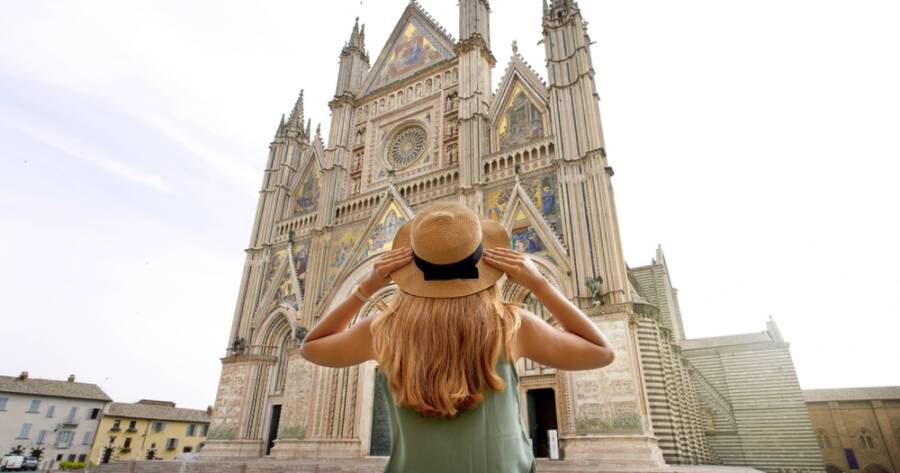Travel today offers more choices than ever, and one of the most important is pace. Some travelers thrive on fast travel, hopping from city to city with whirlwind itineraries, while others embrace slow tourism, favoring depth, connection, and more meaningful experiences. This contrast is about more than time—it reflects shifting values and the kinds of memories we hope to create. Choosing the right approach ensures your journey truly aligns with your travel goals.
What Is Fast Travel?
Fast travel is what many people associate with traditional tourism: short trips packed with as many destinations and attractions as possible. Think guided tours that hit five countries in ten days or solo travelers racing through major cities to “see it all.” It’s driven by the desire to cover ground efficiently, collect experiences quickly, and make the most of limited vacation time.
Fast travel can be exhilarating. There’s a thrill in seeing the Eiffel Tower one day and walking through the Colosseum the next. It’s perfect for bucket-list chasers, first-time international travelers, or anyone with a packed schedule who still wants to see the world.
However, this style of travel can be exhausting. Constant movement, jam-packed itineraries, and shallow engagement can leave travelers feeling more tired than inspired. It also tends to prioritize tourist hotspots, sometimes at the expense of local culture or authenticity.
The Philosophy Behind Slow Tourism
Slow tourism is a response to the frantic pace of fast travel. Rooted in the broader slow movement, it emphasizes mindful exploration, cultural immersion, and environmental sustainability. Instead of trying to see everything, slow travelers focus on experiencing a few things deeply.
This might look like spending a week in a single village instead of hopping across an entire country, learning to cook traditional dishes with locals, or taking leisurely walks through less-traveled neighborhoods. It’s about connecting with people, learning the rhythms of a place, and giving yourself space to be present.
Slow tourism also tends to be more eco-conscious. Fewer flights, longer stays, and support for local businesses all contribute to a lower environmental impact. It’s an appealing approach for those looking to travel responsibly and reduce their carbon footprint while gaining a richer understanding of a destination.
Comparing the Benefits and Drawbacks
Each approach has its strengths—and drawbacks—depending on your travel style, time constraints, and purpose for traveling.
Fast travel is ideal for:
-
Short vacations or limited time off
-
First-time visits to a region
-
Seeing major landmarks or iconic sights
-
Travelers who thrive on variety and momentum
Drawbacks include burnout, superficial experiences, and missing the nuances of local life.
Slow tourism is great for:
-
Deeper cultural immersion
-
Reducing travel stress and environmental impact
-
Making meaningful connections with locals
-
More flexibility and spontaneity
On the downside, you may see fewer places, which could be frustrating if you’re excited to explore a wide region. It may also require more planning for accommodations, work arrangements (if working remotely), or visa logistics.
Finding the Balance: Travel Your Way
The good news is that travel doesn’t have to be all fast or all slow. Many people find fulfillment in a mix of both—hitting the major sights early in a trip, then settling into a more relaxed rhythm in one location. For example, you might spend two busy days in a capital city, then retreat to a quieter coastal town for the rest of your stay.
If you’re traveling with others, especially family, finding this balance becomes even more important. Kids might enjoy the stimulation of fast-paced attractions, while adults may crave downtime and space to explore independently.
Another option is to practice slow tourism within a fast-travel itinerary. Even if you’re only in one city for two days, you can choose to skip the tour bus and instead visit a local café, wander through a farmer’s market, or strike up a conversation with a shop owner.
Travel Is What You Make It
There’s no one right way to travel. Fast travel offers energy and excitement, while slow tourism provides reflection and connection. What matters most is how your travel experience aligns with your personal values, goals, and capacity.
Whether you’re chasing landmarks or lingering over local meals, being intentional about your travel pace can help you create more meaningful and memorable journeys. After all, it’s not just about how much you see—it’s about how deeply you experience it.




